Posted by: Ken @ 2:04 pm
I thought long and hard before I finally bought a flash attachment for my camera.
Having been born in the depths of the Great Depression, I grew up with an acute appreciation of the cost of things. I remember when a nickel or even a penny could buy some pretty good stuff. Only lately have I appreciated the sacrifice that was involved when, in 1942, my mother gave me my first Roger Tory Peterson Field Guide to the Birds. My Mom encouraged my avid interest in birds, and she bought the book for $2.75. According to the Bureau of Labor Statistics Inflation Calculator, her $2.75 would be worth $36.90 in today’s economy. It was a first edition, revised in 1939. (I still have it– see it here).
A recent explanation of benefits that I received from Medicare got me thinking about the cost of medical care. It included payment information about two medical encounters, with a dermatologist and a podiatrist. The dermatologist charged $96 for a routine office visit, and the podiatrist charged $100 for the same level of service. Medicare approved the amount of $67.57 for both visits, and paid its share of that amount, which was $55.66 in each case.
Back in 1961, before Medicare was enacted, I entered family practice in New Jersey. I charged $5 for an office visit and the patients usually paid me directly and filled out their own insurance forms for reimbursement. Other charges were $7 for a house call during the day and $10 at night (roughly defined as after 8:00 PM. Other primary care specialists such as Internists and Pediatricians charged $10 to $15 for office visits. I think the few specialists who performed house calls charged something like $15 to $20.00. According the Inflation Calculator, today my $5.00 office visit is worth $36.57 in inflation-adjusted dollars. The Internist would get $73.15 for that $10.00 office visit, or $109.72 in today’s dollars for the $15.00 visit.
So, I rationalized, a $400.00 flash unit really would only cost me about $30.00 in 1942 dollars– not much more than what my Mom paid for my first Peterson bird book! Not bad at all. So I sprung for the Canon Speedlight 580EXII. As soon as the flash unit arrived I went out into our local patch and took some photos of birds. When I got home and viewed my shots on the computer screen, I was dismayed.
Here is my very first flash photo, of an American Kestrel against a bright overcast sky, high atop a Royal Palm shoot, about 70 feet away: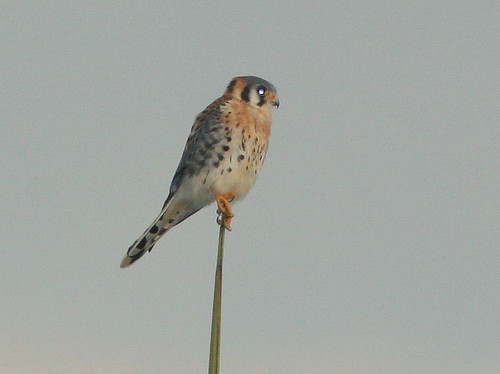
The flash did lighten up its body, which would have looked like a silhouette without it. But ugh! Those eyes! Why did I waste my money?
Another disappointing photo was that of a (Western) Palm Warbler hiding in some shrubs, deep in shade with the sun behind it, at a distance of about 50 feet:
The “steel eye” reflection had spoiled this photo as well. I have seen many bird photographers use flash. Their bird eyes never turned out like this! Or so I thought. First, I wanted to know why this happened to my images, and then find out how to prevent it. My Internet search yielded a very useful web site that explained my problem. It was eye shine, also called “steel eye,” the equivalent of “red eye” in humans. It appears that the problem worsens, the farther away the bird is from the flash, because the relative distance between the lens and the flash decreases with distance to the subject.
Parallax, the difference between the view of a subject as seen through the picture-taking lens of a camera and the view as seen from the flash unit, decreases as the subject becomes more distant. Because the angle of parallax is so slight at long distances, the flash lights up the bird’s retina, which is very reflective, rather than bouncing off the cornea. Small point-and-shoot cameras with flash units close to the lens cause “red eye,” even at short distances, for the same reason. The human retina does not reflect as much light as that of a bird, so we see the red from the retinal blood vessels. Since locating the flash unit far away from the camera is not very easy to do in the field, the only practical solution is to edit the photo and create an artificial catch light, mimicking the reflection of the sun off the cornea. I tried this approach, following instructions on the web site:
Since I do not have Photoshop, I used “Poor Man’s Photoshop,” a free program, Paint.net (remember, the Great Depression?) to edit the steel eyes of both birds. I first blackened the entire eye, and then added the catch light, one pixel at a time.
Here are the results– now I feel rather dishonest about displaying them as “originals:”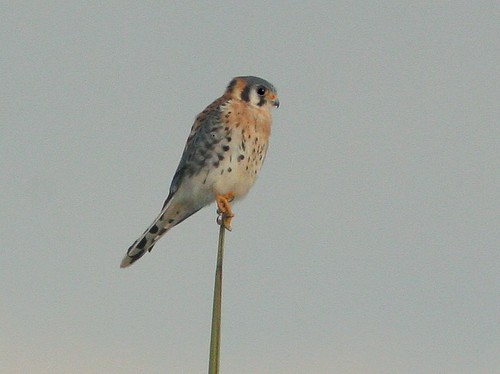
This Palm Warbler, at much closer range, had a hint of “steel eye,” but I left it alone as it was not unattractive. Its long legs are an adaptation to its habits of feeding on the ground:
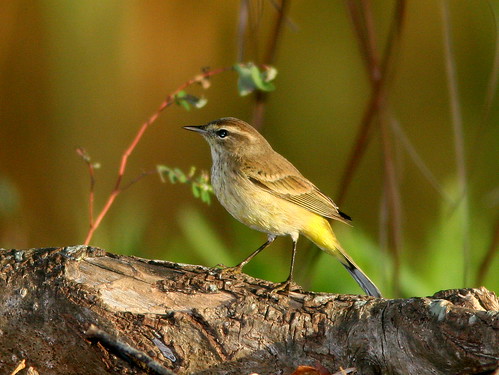
I deliberately went around looking for shots that would definitely have been terrible without a fill flash. This Green Heron had not only the sun, but reflection from the water behind it. At about 30 feet, the flash overcame the deep shadow: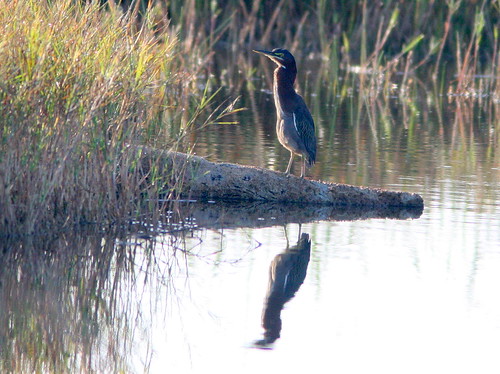
The flash brought out the details of a male Belted Kingfisher that fluttered above the water before plunging for a fish: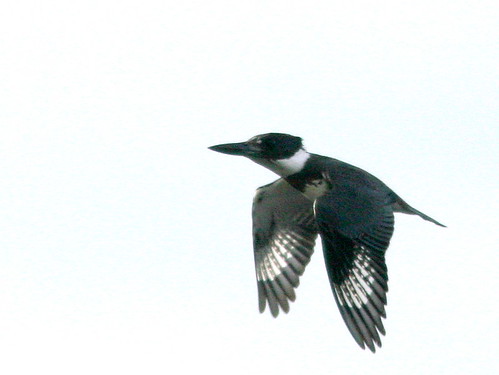
The kingfisher caught quite a large fish, that looks like a young bass (click on the photo for a sequence as it swallows the fish):
A few days later, an accessory arrived– a Better Beamer flash extender. It uses a Fresnel lens to focus the flash in a spot so that it carries a greater distance. I tried it out on one of our local Bald Eagles that was high on a perch with sun over its shoulder. It illuminated the bird’s breast fairly well: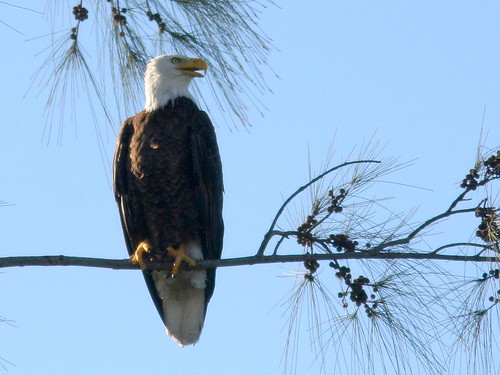
Black plumage can be problematic, as with this Turkey Vulture that was sunning itself on the boardwalk of the local Pines Soccer Park and Nature Preserve:
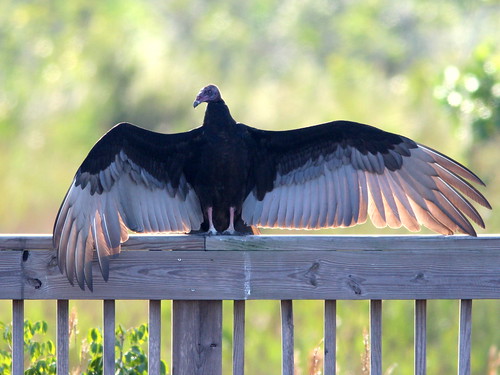
The Better Beamer flash brought out the feather texture of this nearby Black Vulture without causing eye shine:
A Wood Stork and a Great Egret look as if they are not speaking to each other. Actually, I often see Wood Storks and herons fishing together. Their methods differ, as the stork captures fish by touch and the heron does so by sight, so they don’t compete and may actually benefit from the association.
The BB attachment reached out and gave me pretty good illumination of the subjects, about 70-80 feet away:
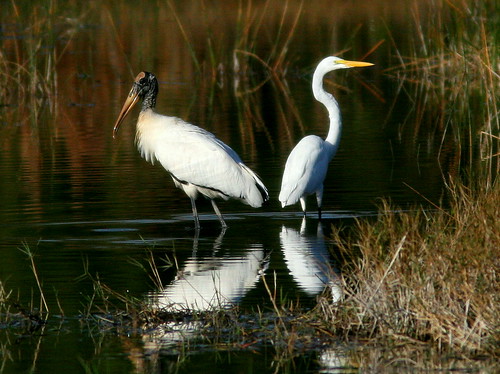
I think the undersides of this female Northern Harrier may be better defined, thanks to fill flash:
While I was waiting for an elusive Swamp Sparrow to reappear, a curious female Prairie Warbler came right up to my shady “hiding place.” The eye reflection from my “Better Beamer” flash extender is fine, since the bird is so near, about 8 feet. I also think the fill flash enhanced the bird’s natural color against the bright blue sky:
ADDENDUM (December 6, 2010):
I have received questions about whether flash photography startles or harms birds. Before I took up photography, and even while I was photographing birds without flash, I was concerned that flash would scare the birds away. I’ll admit that I felt angry and almost wanted to confront photographers who were surrounding a Cuban Pewee in the Everglades. When I asked photographers about it, they all said it had no effect on birds’ behavior. In truth, the pewee did just stay in place and kept coming back despite all the disturbance.
The consensus seems to be that under low light conditions, use of flash may disturb some birds, or even interfere with owls’ adaptation to the dark and thus be harmful. Certainly shining a floodlight on an owl can sometimes immobilize it, probably because it is temporarily blinded.
An Internet search turns up lots of anecdotes and opinions about the issue. However I could find no scientific evidence from controlled experiments that shed “light” on the subject. In daylight, flash photography appears to cause no change in behavior. In fact, just yesterday I was standing by a damaged shrub that was a favored foraging site for Prairie Warblers and a House Wren. I used flash before they approached the shrub, and they flew towards me and I continued to use the fill flash at short range.I actually had to switch my lens to a macro setting for the Prairie Warbler that was only about 5 feet away from me as I was using the flash.
This article addresses the issue of harm or impairment of the bird or other animal’s vision by flash, and concludes that permanent damage is unlikely.
Another view, from the Digital Bird Photography web site (an excellent resource), mentions an instance in which flash did disturb an Osprey. It also admonishes photographers to be sensitive to the concerns of others who believe that use of flash constitutes “harassment.”
Ken













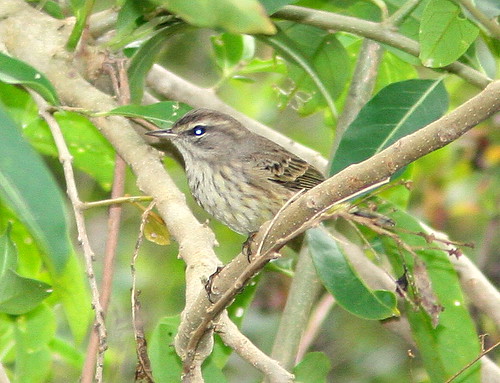
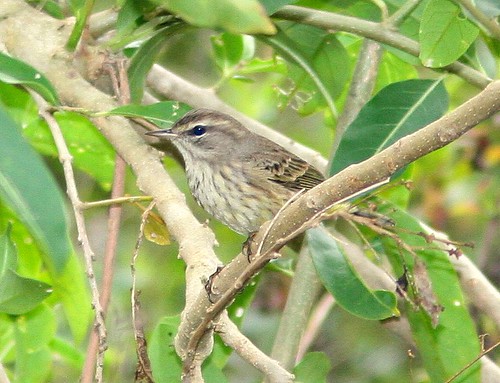
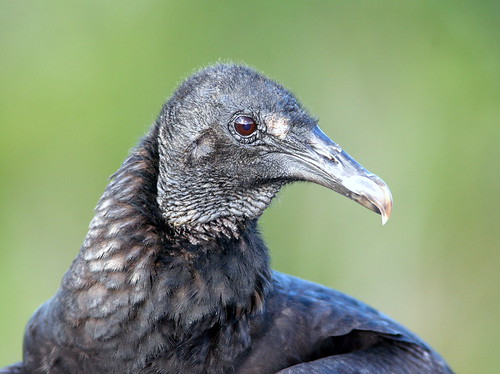

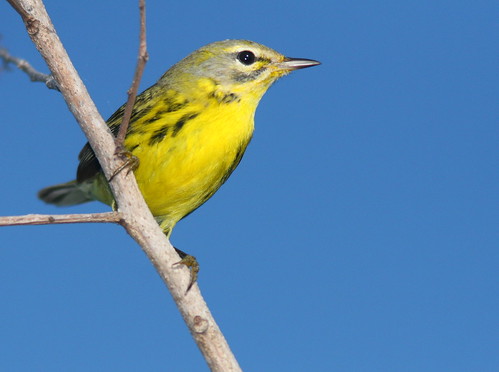
December 7th, 2010 at 9:09 am I’ve never tried to use a flash when photographing birds but I’ve seen many photographers using the Better Beamer. Thanks for sharing the photos you got as you experiment with this equipment. I love all the photos you’ve posted here.
December 10th, 2010 at 9:12 pm Wonderful post! Nice tips and great photos.